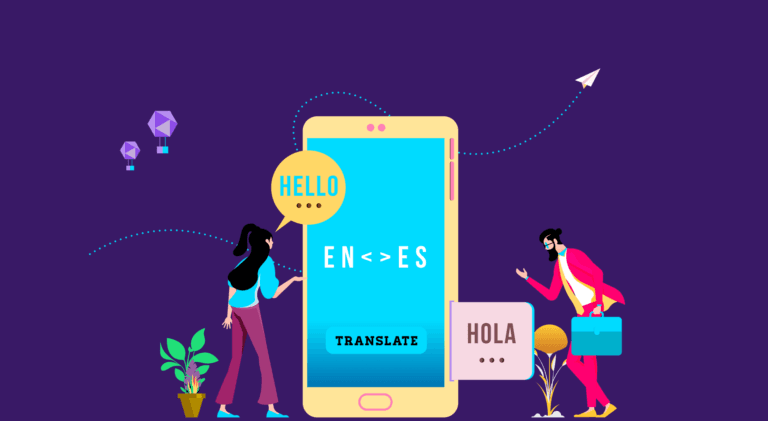All You Need To Know About Video Subtitling For e-Learning

The e-learning industry has exploded, especially due to the restrictions introduced during the COVID-19 pandemic in 2020. Given the limitations, the sector gained momentum, and government and private organizations relied heavily on e-learning platforms to provide access to education.
Now, despite the pandemic restrictions being revoked, e-learning continues to grow globally and is expected to be worth $325 billion in 2025, with a CAGR of 10.85% Year-on-Year.
Some of the major reasons e-learning is continuing to grow in popularity include everything from allowing learners to learn at their own pace to providing a flexible and easy-to-use medium of learning. Undoubtedly, producing e-learning videos is currently in rage. But while it can transcend geographical barriers, linguistic barriers may still hamper your growth outside your target market.
You can create subtitles for your videos to help you improve your audience reach and expand to additional geographies. This is especially important since even for the same language, each geography can have its own dialect or accent, which is hard to follow. Adding subtitles online or multilingual video subtitles is extremely necessary and can add massive value to your content.
To help you create apt subtitles for your e-learning videos, here are all the details you need to know about multilingual video subtitles.
What is Multilingual Video Subtitling?
Since the increasing adoption of e-learning platforms, many learners are accessing online videos and classes to upskill and grow in their careers. These learners come from diverse age groups, linguistic and geographical areas, and have varied requirements. Video subtitles act as a text alternative for the spoken audio and enable learners to follow the content of the video. If you make subtitles for video, it not only helps audience retention and learning but is also shown to boost video engagement by 40%, according to PLYMedia.
Multilingual video subtitles are text-format of the original audio converted into a different language. This helps viewers who are familiar with or prefer an alternative language to still benefit from the video. It even makes the communication seamless, as the viewer now has the choice to imbibe the content of your video in a language that they prefer, ensuring higher impact and stronger recall of the topic in discussion.
Step-by-Step Guide on Creating Multilingual Video Subtitles For e-Learning
While adding multilingual video subtitles is a big advantage in reaching the target audience, there are some steps you need to consider even in the production phase to ensure that the outcome is ideal for creating a multilingual subtitle video online. Some of the steps that you should follow are:
1. Keeping in mind the requirements of your international audience
Creating a video for an international audience is difficult, especially regarding e-learning concepts and contexts. Make sure you keep this in mind when planning or creating the video, and remove any cultural, religious, or sports metaphors that may appeal to a particular audience but may not have the same impact on an audience in a different part of the globe.
For example, suppose you are creating a video for a US audience. In that case, sports metaphors with baseball terminologies will hit a home run but will not yield the same result in India, the Middle East, or even Europe, where the audience doesn’t follow the sport.
2. Leaving space at the bottom of your video for subtitles
A basic rule of subtitling is to have text-safe areas with a maximum of two lines of text for each screen. So the space at the bottom should not be hampered when creating a video, especially one with visual elements, graphs, or captions.
3. Ensuring a slow pace for subtitle readability
A good practice for any e-learning video is to ensure that the pace is slower than one would typically speak, especially when recording the original voiceover. This helps students stay in sync with what is being taught and gives time to grasp the topic while the student is reading the subtitles. Ideally, a good pace is one where there are no more than 190 words per minute.
4. Simplify the topic and the script
Although translation services ensure that the gist of your video is communicated precisely to a local audience, it is still not going to be a smooth road. To help make the video content relevant to a larger audience, you must ensure that the topic and the script are properly defined and easy to consume. The effort required in translation and contextualization is simpler if the original video is easy to consume and understand.
5. Keep it short and break each subject into sections
Any video, be it for a specific or global audience, should be quick and have the contents broken down into distinct sections. This helps improve the students’ attention span and ensures that the content is easy to consume and broken down into bite-sized chunks.

Benefits of Multilingual Video Subtitles
Multilingual video subtitles are significantly beneficial when improving your online learning experience. Some of the top reasons to consider multilingual video subtitles are:
1. Wider reach among an international audience
Plan to create your online video courses in English only? While English is understood in multiple parts of the globe, only 6% of the world’s population speaks English as a native language.
So if you are planning to reach a global audience, you may need to consider creating content that is apt for the language of the particular region or at least has multilingual video subtitles to cater to the specific audience.
2. Improves misunderstanding due to accents
When creating e-learning videos, the speaker is bound to have a particular accent that can may be difficult for learners of other parts of the world to understand. Subtitling helps save the day by enabling learners to understand precisely what is being said and keep track of the video content without requiring to pause or rewind the video multiple times.
3. Compensates for poor audio and reaches the hearing impaired
Despite our best efforts, there are times when the audio quality of a video may not be at par with today’s standards. This is especially true if the video was shot a few years ago when technology was not as updated as it is today. Adding video subtitles is the right step to make up for this poor audio quality and communicate the message to an audience that can be partially or fully hearing impaired.
4. Improves retention and engagement of your content
Reading and listening simultaneously have been shown to boost retention rate, so having multilingual subtitles from video helps as the audience learns and retains the information better. This helps create a greater impact of your video content and even makes learning easy and exciting.
5. Boosts SEO
Investing in multilingual video subtitles doesn’t just help your online learners or humans; it will also enable your videos to get a higher preference with search engine algorithms. Videos with subtitles are more likely to be picked up during search results thus gathering more traffic.
Key Takeaways
- Multilingual video subtitles are text-format of the original audio converted into a different language. This helps viewers who are familiar with or prefer an alternative language to still benefit from the video as anyone who speaks the same language.
- Multilingual video subtitles improve the online learning experience.
- Multilingual video subtitles ensure that a wider group understands the video content. This includes those from different geography, linguistic preference, or who speak a different dialect.
- Multilingual subtitles also improve the impact and retention of your video content, making online learning more valuable.
- It has also been proven to boost SEO for your videos since search engine algorithms are more likely to pick up your video based on the search terms and keywords used in your video subtitles.
- You can work with a professional subtitle agency to help you convert your video or e-learning content into different languages. They provide an accurate translation that is perfectly localized and contextualized to suit the audience of a particular area and linguistic group, improving your video’s overall retention and credibility.
FAQs
Yes. Multilingual subtitles are standard practice, especially for e-learning and business videos that cater to multiple geographies and linguistic groups. It includes subtitles in the selected language, while the audio will be in the original language in which the video was made.
If your video has subtitles in different languages, you can upload .SRT files in the selected language. Once these files are ready, click the ‘Add language’ option on YouTube and provide the subtitles file for that language.
If you are creating a video presentation, you can simply upload the video subtitle SRT file that will showcase your subtitles and the video. Create a text file using Notepad, TextEdit, Notepad++, or other text editors. Add timestamps for each subtitle text to match your video. Once you have confirmed the subtitle position, add the .srt file with the same file name as the video. And you’re done!
Latest Blogs
Explore how Google’s 2025 AI search updates triggered ranking chaos. Learn actionable strategies to adapt your SEO for AI Overviews, zero-click searches, and SERP volatility. Stay ahead now.
Learn how to rank on AI search engines like ChatGPT, Perplexity, and Gemini by optimizing your content for authority, structure, and relevance. Stay ahead in AI-driven search with this strategic guide.
Explore the best healthcare SEO services for your medical practice. Improve online visibility and effectively reach more patients in need of your services.
Get your hands on the latest news!
Similar Posts

Translation
5 mins read
All You Need to Know About Language Translation and Terminology Management

Translation
5 mins read
6 Reasons to Translate Content into German

Translation
5 mins read